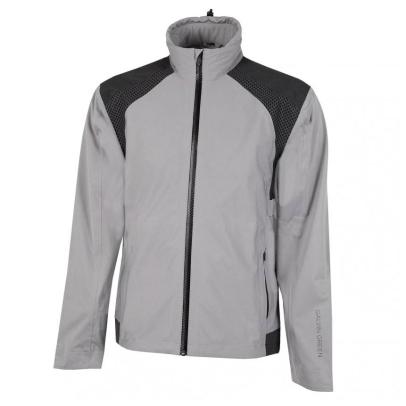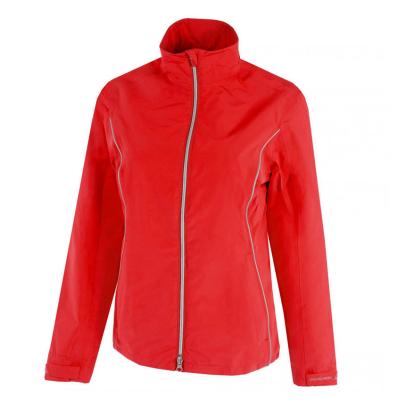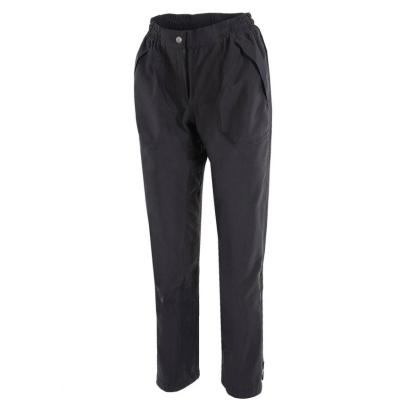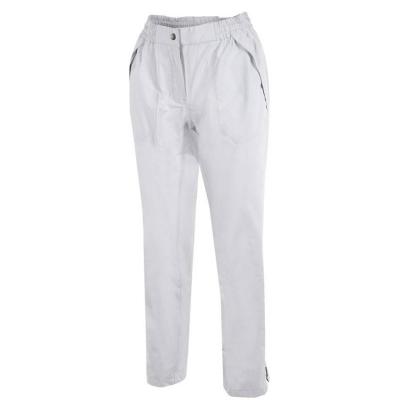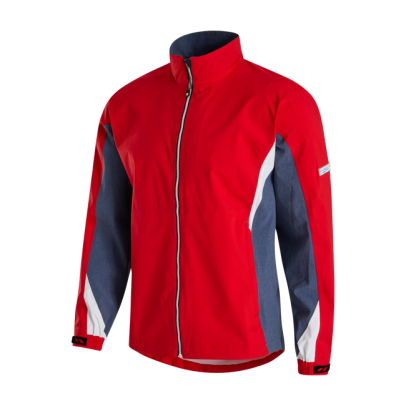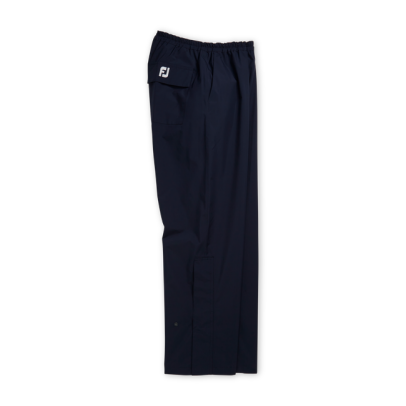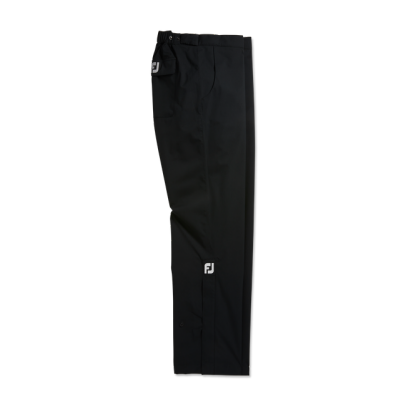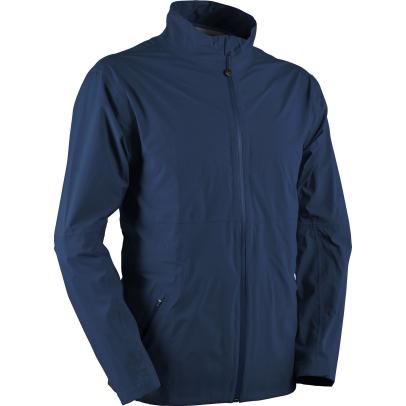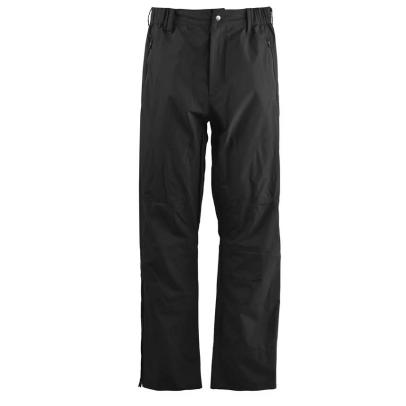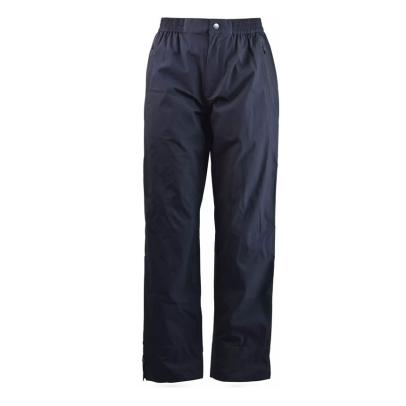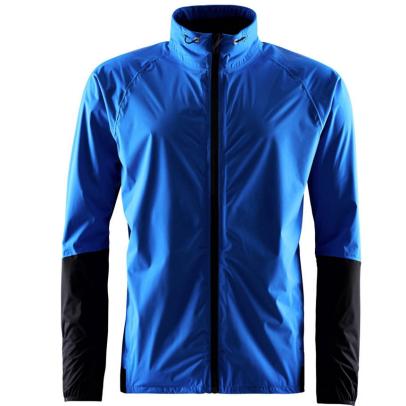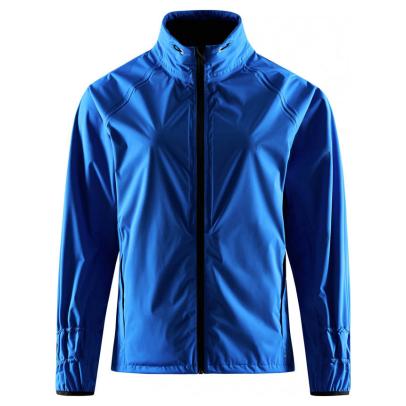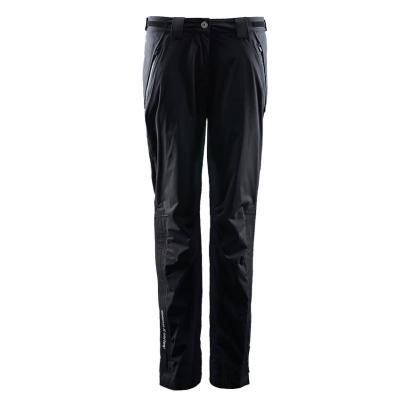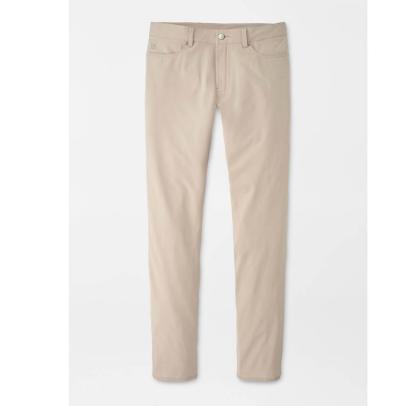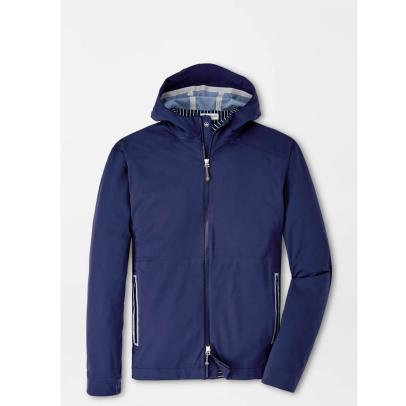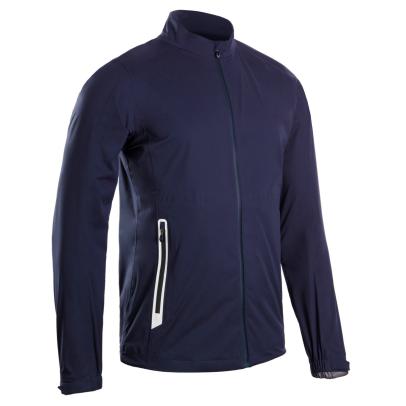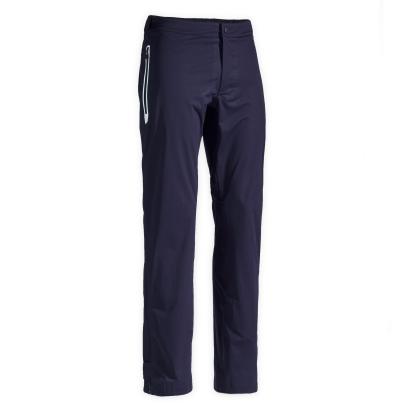Editors' Choice
Best Raingear For Golfers
There’s no reason that a few raindrops should get in the way of completing your round comfortably. But this is where the right raingear comes into play. If you’re the type to make the turn without question during a monsoon, you’ll want a heavy duty raingear set you can trust to keep you dry. If you’re just looking for something to bead away rain until you get back to the clubhouse, there are more affordable options that are a little more lightweight and easier to store in your bag until you need it.
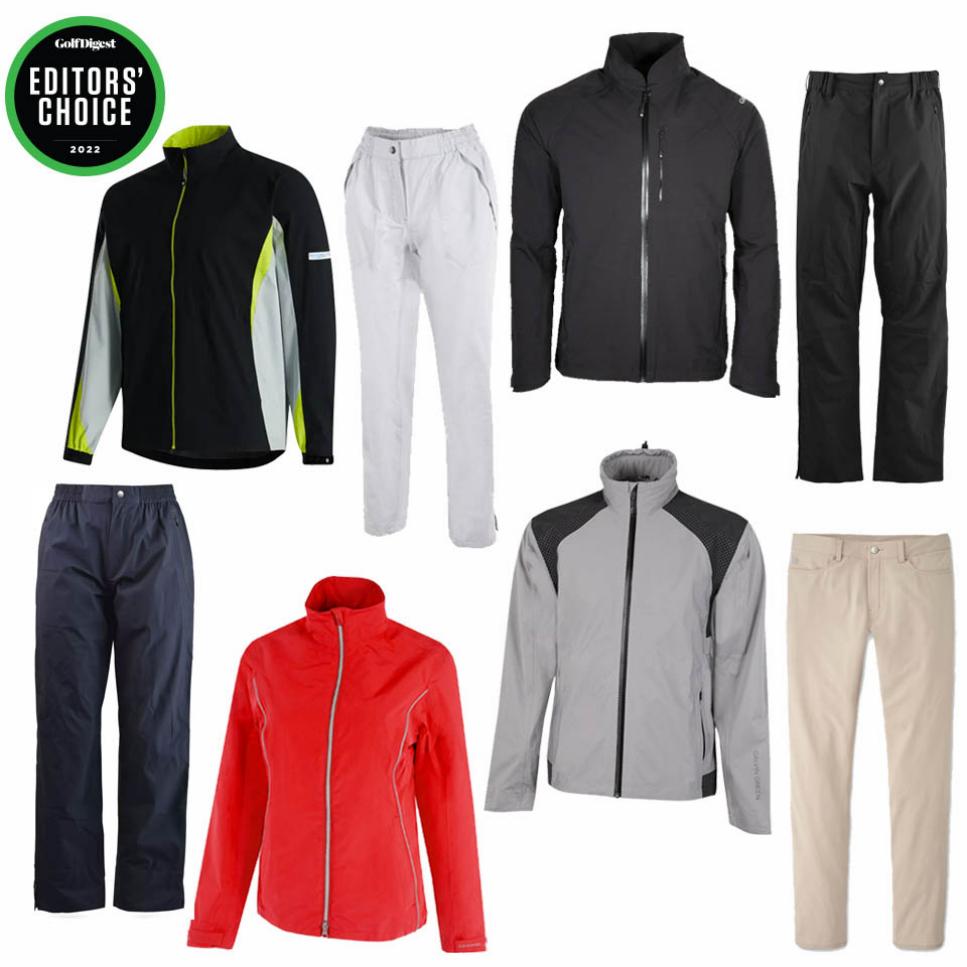
More 2022 Editors' Choice Winners
Best Coolers for Golfers
Best Hydration Powder for Golfers
Best Protein Bars for Golfers
Best Divot Tools for Golfers
When evaluating raingear, we put each brand’s waterproof promises to the test in simulated rainstorms and on-course testing during inclement weather conditions. We analyzed fabrics under microscopes, timed how long it took them to dry completely, measured how small each folded down and even compared how much noise each piece made compared to competitors—among other tests performed over the last several months. Testers ranged in size, age and golf skill in order to help inform golfers of all types on the best rain gear for their needs. Although the technology is typically identical, both men’s and women’s options were tested where applicable.
Best Heavy Duty Raingear: Galvin Green
There’s a reason Galvin Green raingear is one of the most trusted in golf. It’s the rainsuit you want to have with you when the match is close but the rain isn’t letting up. The heavy duty pieces are made with waterproof Gore-Tex fabrics that release heat and moisture internally and block water or wind from the outside to keep you totally dry. The addition of the brand’s C-Knit backer technology adds comfort and breathability. All the seams are taped so that no rain can get in and pass an extensive wear test before going to market.
These pieces come at a premium price point, but are designed to weather many seasons. The Galvin Green Action Jacket was one of the heavier jackets in the testing group (14.4 oz) which helps to protect the wearer from the elements, but testers said the extra weight did not impact mobility or comfort and did not feel heavier when the jacket (and tester) was soaked with water. Design elements like an adjustable strap around the torso or the sleeve opening angled at the wrist to be shorter where the hands meet during the golf swing show the attention to detail Galvin Green designers brought to make this rain gear specifically for golf.
The only testing in which the Galvin Green pieces did not rank highly in was packability. The thickness and abrasion-resistant shoulder fabric on the Action Jacket made it tough to fold down compactly. These pieces are designed to be intentionally worn in rainy conditions, not a back-up jacket stuffed at the button of your golf bag.
Best Everyday Raingear: FootJoy HydroLite
The balance of cost and performance in wet conditions is what put this collection at the top of the list. True to its name, the HydroLite collection is designed to be lightweight and stretchy. It’s got a 20,000 mm waterproof barrier, which is the standard for most high-end raingear and will perform well in heavy rainstorms. Taped seams and adjustable waterproof cuffs add extra protection and an internal waterproof scorecard holder for quick storage.
If you order true to size, expect it to be a bit larger than your typical jackets. The oversized design makes it easier to take on or off during the round and accommodate layering. Since it is primarily a waterproof shell, it doesn’t add much warmth if the temperatures are low, so plan to have a long sleeved shirt underneath on chillier days.
We’ve expanded the Best Raingear picks to include options for all golfers with new categories for different weather conditions, price points and style preferences. Here are the 2022 Editors’ Choice picks for Best Raingear.
RELATED: Cold-weather survival guide: Sneaky tips from three golfers who brave the coldest conditions
Best Heavy Duty (More Affordable): Sun Mountain
Sun Mountain’ Men Cirque and Women’s Stratus are a great option for heavy rain at a less premium price point. Prices still range in the $200-$300 range, but are a great option to invest in your rain-soaked rounds to come. Rain beads up and falls off the DWR coating without penetrating the inside, adding weight or ruining the look of the jacket. Even when totally soaked, it still has a refined look and soft feel. It has a heavier feel due to its three-layer construction that testers noted gave them confidence in the jacket that it would keep them dry and warm before testing proved just that.
If there was a category for best raingear with the most adjustments or customizable features, the Sun Mountain Cirque would be a top contender as well. The cinch system at the waist keeps the jacket secure so that it won’t move around during the swing and won’t blow around in the wind. That adjustment has a hidden push-to-release button that resets the tightness instantly to make it easy to change out of. Our testers also appreciated the self-hem option for the rainpants to easily adjust the length of the pants with an internal clip.
Most Packable Raingear: Abacus X-Series
Abacus raingear is designed to regulate the body temperature in any weather. When the body gets hot, it emits vapors that turn to liquid or sweat. Aiming to maintain a core body temperature of 37.5 Celsius, the technology in the raingear captures those vapors before they liquify and uses that energy to add warmth or eliminates it to cool things down. Using natural materials like coconut and volcanic sands in the fibers of the fabric, it has top wicking capabilities that won’t degrade over time.
Abacus outperformed the competition considerably in the packability testing. It folded down compactly with the least effort or refolding required. It didn’t retain air pockets or have to be shoved down to fit into some of the smaller pockets in our tester’s golf bags—even while soaking wet.
Most Stylish Raingear: Peter Millar
When we handed our testers the Peter Millar Laddie Rain Pant before they stepped into our rainstorm simulator, they thought we were crazy. At first glance, the pants look like a regular pair of golf pants—your typical everyday khakis. But they’re actually made with a 2.5 layer waterproof performance fabric that held up during our testing. It’s got a five pocket design and could be worn as an everyday pant but is seam sealed, windproof and is made from a nylon-polyester stretch fabric that is quick-dry and easy to care for.
Paired with the Peter Millar Hyperlight Link Hooded Jacket, this set was by far the most stylish raingear set we’ve ever seen. The pants are designed to be worn alone, not over your regular pants like most raingear, so just make sure you don’t de-layer until you get back to the locker room. If you prefer a more traditional rain pant, the Hyperlight Shield Rain Pant is an upscale and waterproof pant that matches the rest of the collection in both style and performance in wet conditions.
Best Value: Inesis
At just $80 for the jacket and $70 for the pants, the Inesis raingear was a dark horse in the competition. It held up in waterproof testing, got high marks in style and one of our testers even tried to sneak out the door wearing the jacket he liked it so much. It’s made with a quiet laminated material that’s built to move with you during the swing and promises to keep you dry for up to four hours. After four hours, the pieces started feeling a bit heavier and some water vapors penetrated the fabric, but it’s a great option for light rain showers or for casual golfers looking for raingear to keep on hand for pop-up storms. Unfortunately, the line is only available for pre-order at this time, with an estimated 30-day delivery period.
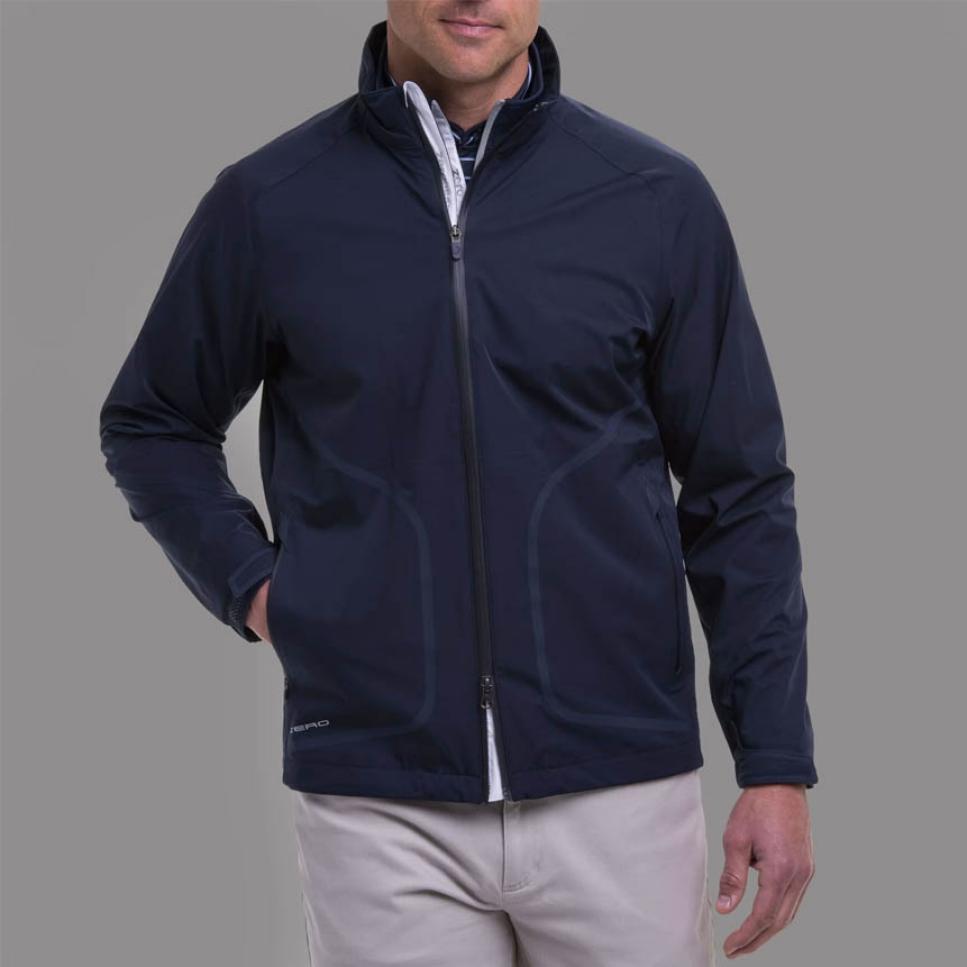
Zero Restriction Men's Z2000 Jacket
This three-layer jacket is another top contender for playing golf in bad conditions. It’s fully waterproof, seam-sealed and packed with golf-ready details. There’s an anti-chafe chin guard that adds protection without sacrificing comfort, the adjustable arm cuffs have a unique closure that’s less abrasive than Velcro and won’t attract dirt or fabrics. It’s on the higher-end pricewise, but the brand guarantees it’ll be waterproof for the life of the garment.

Galway Bay Men's All-Weather Jacket
There’s a higher collar at the back of this jacket that blocks rain from going down your back, but it tapers around the neck toward the chin for a more comfortable wear and streamlined look. It’s made with a waterproof fabric that is quieter than most swishy-sounding raingear and is thick enough to add a bit of warmth in colder conditions. Our testers were a fan of the versatile styling of the jacket that can easily transition off the course. The monochromatic Galaway Bay branding gives it a sleek and on-trend finish that adds versatility so it can easily transition off the course.
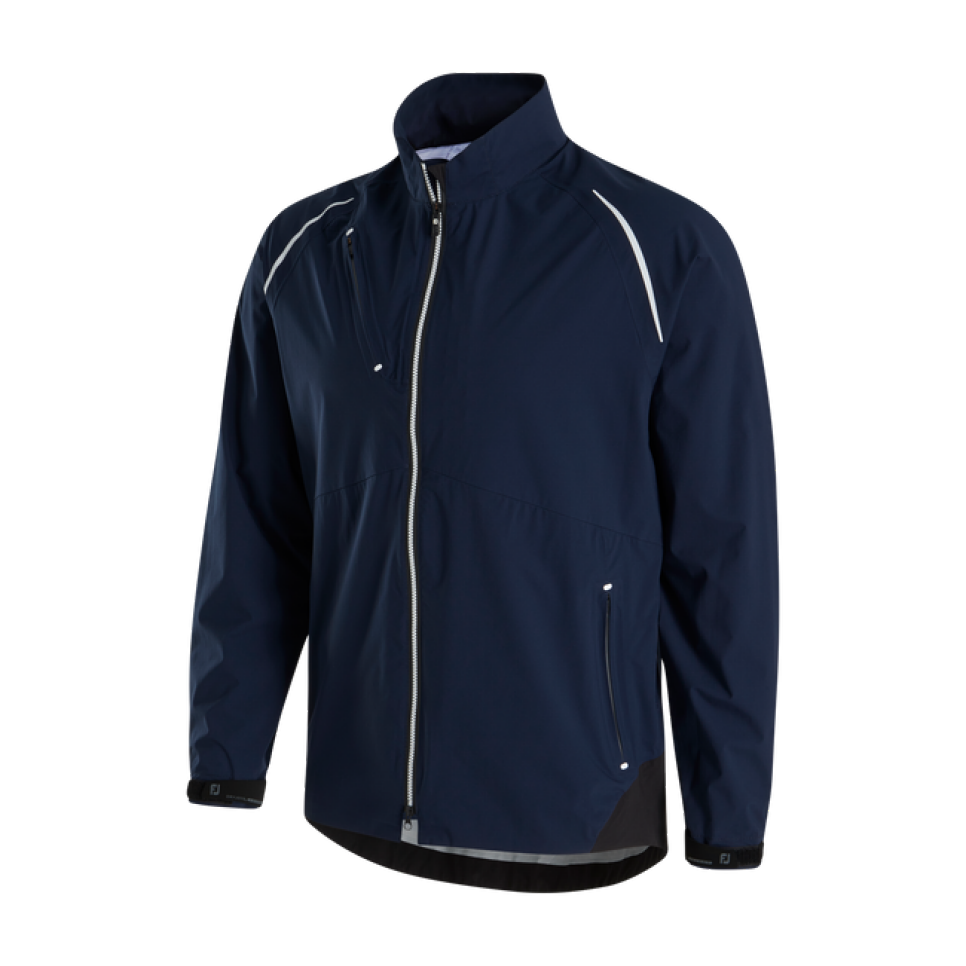
Most Packable Runner-Up: FootJoy Men's Select LS Rain Jacket
The FootJoy Select LS Rain Jacket was one of the more noticeably lightweight jackets we tested, weighing just 7.4 ounces—about the weight of a golf shirt. It comes in seven color options, but is only available in men’s sizing. It’s a true shell rain jacket, meaning it will block rain well but will not provide much insulation or warmth.
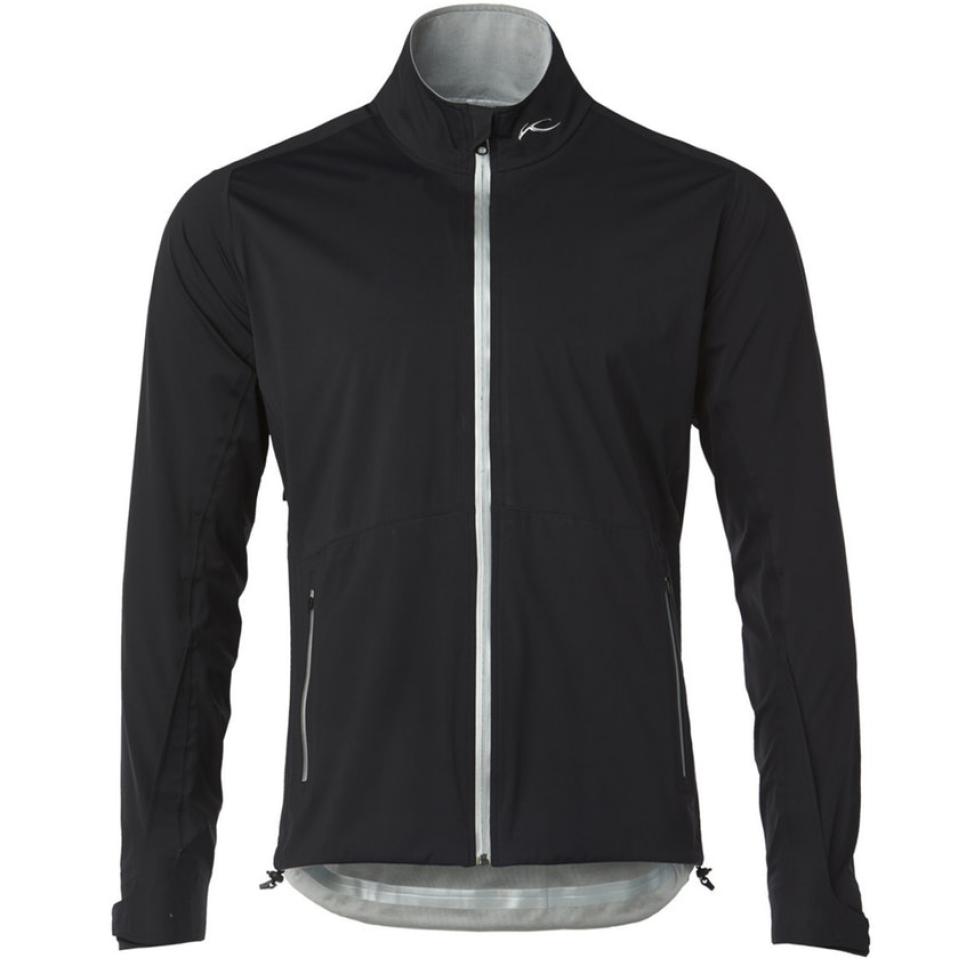
KJUS Men's Gemini Jacket
For an athletic-modern look, the raingear from KJUS ranks high style-wise. The jacket is reversible, but most people wear the traditional blue or black color side primarily. The darker side is designed to absorb heat to keep you warm, while the silver-gray alternative side can reflect that heat to cool the body down. The raingear pieces are well-tailored, have an upscale look and feel, and performed very well in our waterproof testing.
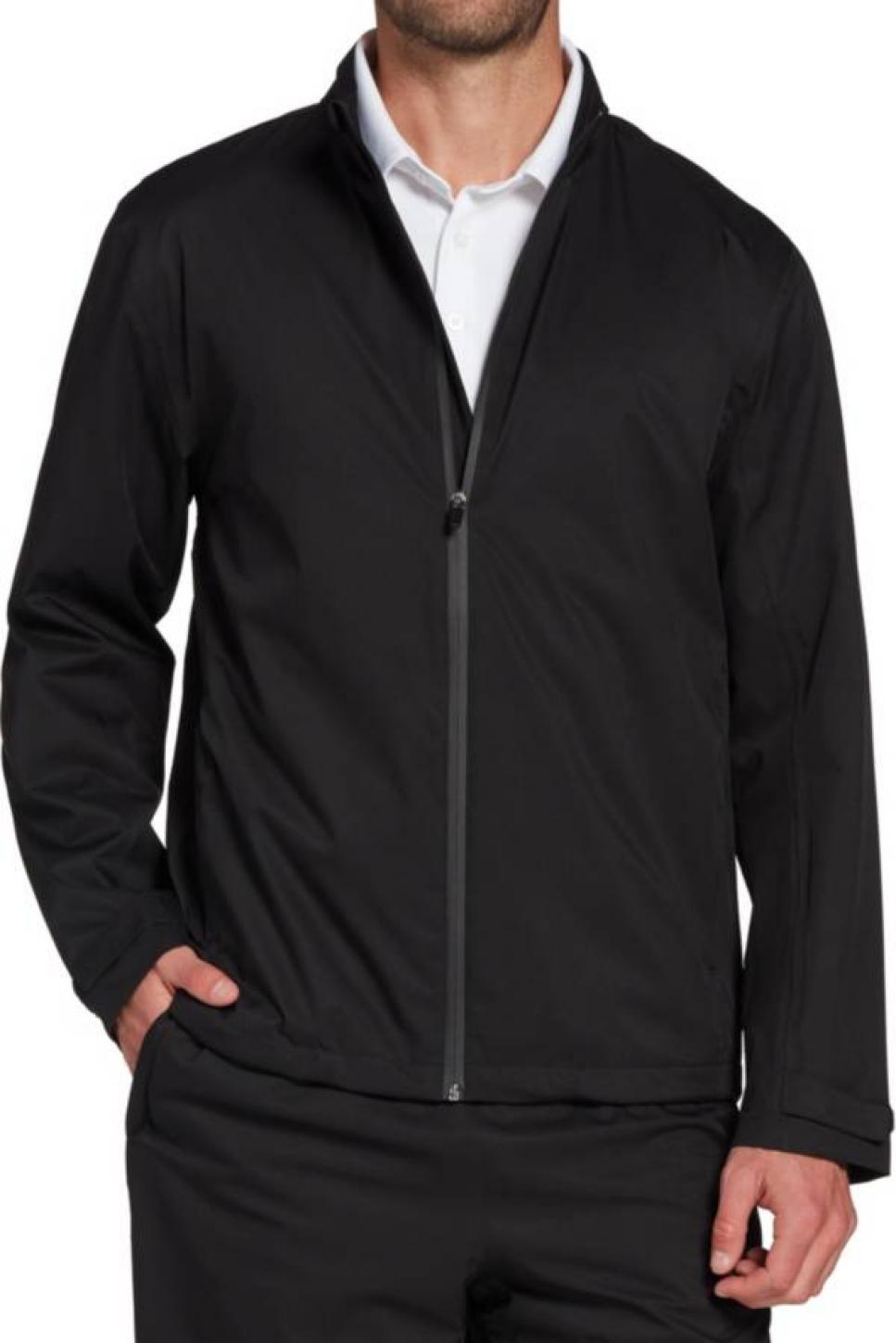
Walter Hagen Men's Full Zip Golf Rain Jacket
Testers noted that this seam-sealed, wind- and waterproof jacket didn’t seem like a golf jacket and felt like more of a traditional rain jacket. It has a looser fit that can accommodate layering underneath, and vents at the back give it a breathable feel. It’s an affordable option that will keep you dry and has simple styling for those who prefer a no-frills set of raingear.
More 2022 Editors' Choice Winners
Best Eyewear for Golfers
Best Training Aids for Golf
Best Pushcarts
Best Golf Umbrella
Raingear Buying Guide:
Everything you need to know about buying the best raingear for golf
Our style editors spent the past months putting the raingear on the market today through a series of thorough tests. After simulated rainstorms and rough course conditions, they’ve compiled this list (above) of the best waterproof pants, jackets and garb for players of all types and skillsets. But once you’ve found your perfect fit, how do you maintain it? Here’s everything you need to know about how to care for your raingear, so you can make the most of your purchases and extend the life of your waterproof golf gear. Plus, we break down some key terms and concepts to know when hunting for precipitation-friendly clothes for the course, so you can shop confidently.
What is DWR?
If you’ve spent any time looking through product reviews or raingear comparisons, you’ve probably come across this term. DWR stands for the durable water-repellent finish most raingear are treated with. Most water-resistant raingear consists of two basic components: a waterproof membrane to stop rain from soaking through the interior, and a DWR, the waxy coating that helps keep precipitation from pooling on the fabric and consequently breaking down its resistant qualities.
If you’ve ever heard fellow players complain that their rain jacket has “stopped working,” it’s probably related to a breakdown of the DWR. This can happen over time due to accidental snags or tears, as well as stains or buildup of oils (which could come from as benign a source as the skin’s natural secretions) that accumulate and slowly deter the DWR. You’ll know this has started to happen when you wear your raingear but find it leaves you clammy or a little damp, almost as if there’s condensation percolating inside your clothing.
The good news: this is fixable. There’s no need to run out and buy a replacement just yet (unless, of course, you’re just using the DWR as an excuse to check out one of the jackets we’ve got our eyes on, which we’d totally understand). The next section breaks down the easy steps to follow when caring for your jacket, including repairing the DWR.
How to care for raingear
While raingear is known for its durability and ability to keep you dry during torrential downpours and the roughest of playing conditions, these pieces still require care and maintenance. Following these simple steps when you suspect your raingear’s lost its impermeable sheen will help extend the life of your purchases.
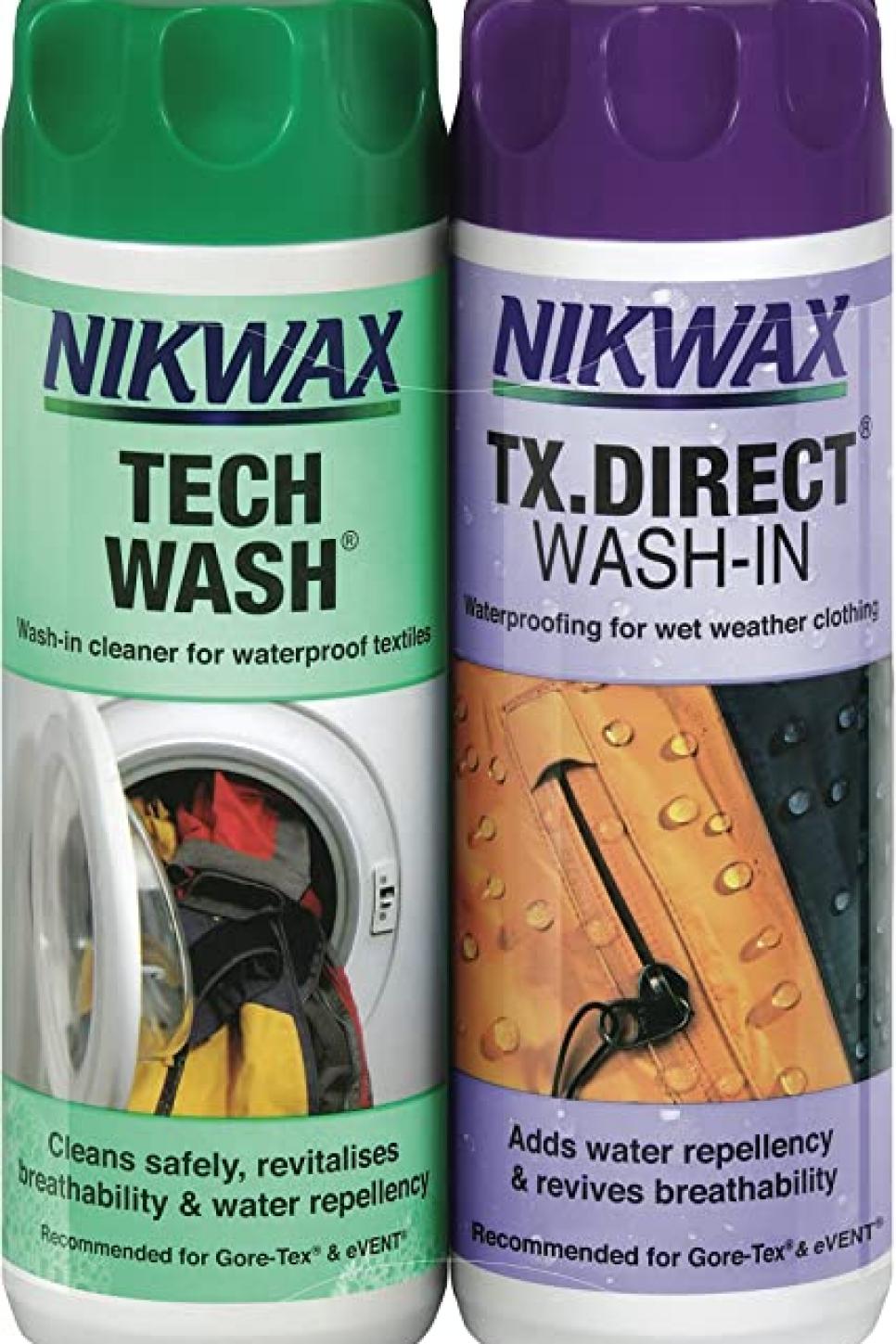
- Check for stains that might be contributing to the exacerbation of the breakdown of the repellent qualities. These can be spot-treated using a stain remover specially designed for waterproof gear, like Nikwax. Spray on the desired areas and set a timer for 5 minutes. Then give the area a little rub to help loosen the oils. Proceed to Step Two.
- Wash your raingear using a specially designed detergent, like this one. You can do this right in the washing machine. Only wash a few articles of raingear at a time so as not to overwhelm the fabric. Use a normal cold water cycle, or follow the directions on your soap product of choice.
- Re-waterproof your gear if you feel the need to. You can do this right in the machine using a purchasable re-waterproofing formula (Nikwax also makes a well-regarded option here). Before starting, you’ll need to inspect your gear and see whether or not it has a liner (a soft, non-waterproof interior). If it does not have a liner, you can proceed with the waterproofing product in the machine, though change your settings to a delicate cycle, or check the product for further instructions. If your gear does have a liner, the step is slightly more complicated, but still very doable. Take the gear out of the machine and hang it. Put your waterproofing solution in a spray bottle (or buy a spray-on alternative) and coat your gear. Make sure you cover the whole area evenly; difficult spots like around the shoulders and underarms may require a bit extra attention.
- Allow generous drying time and opt for air-drying rather than using a machine. While these steps aren’t too technically difficult or time-consuming individually, with drying time, this process can take 24 hours.
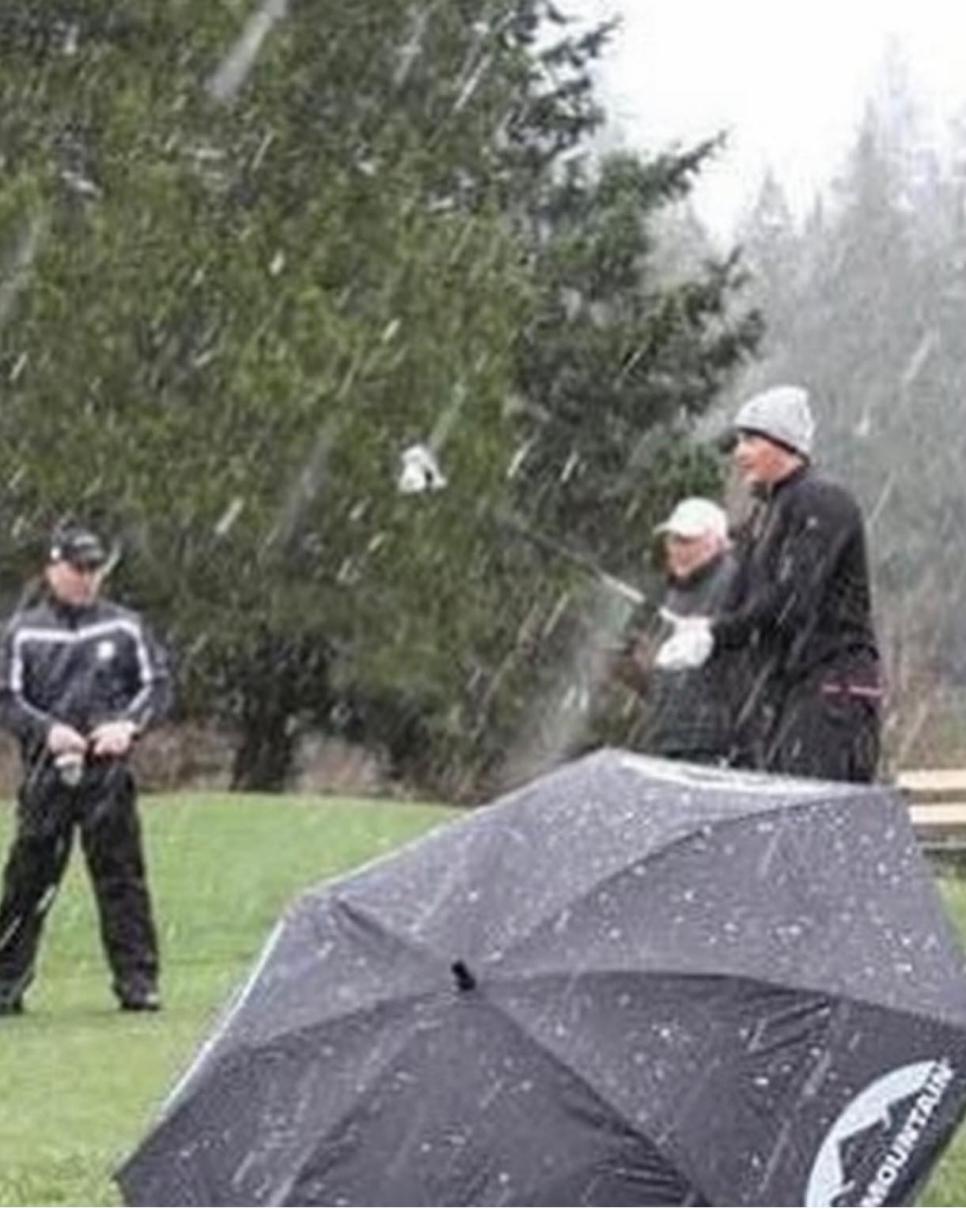
Image via Sun Mountain
You can reapply the DWR as many times as necessary, extending the life of your gear multiple years. Other maintenance issues, such as broken zippers, tiny holes, or broken laminations can also yield simple fixes. The next section explains when to say enough is enough.
When to replace your raingear
You’ll know it’s time to say goodbye to your trustee raingear when these simple fixes and maintenance steps no longer work. Large tears that can’t be patched, steamed or re-melted together, broken laminations no tape will hold, or fabric snares that compromise the jacket’s integrity are all signs that it’s time to say adieu.

The silver lining? There’s awesome new waterproof tech to behold if you’ve decided on an upgrade.
Type of raingear per conditions
So you’re looking to fill out your rainy day golf wardrobe, or you’re staring at your closet trying to figure out what to wear to hit a few rounds on an ominously gray-skied day. Here’s how to know what type of raingear is right for you.
There are three types of raingear: waterproof/breathable, water-resistant, and waterproof/non-breathable.
Waterproof/breathable: This category of raingear is for more heavy-duty rains that are no joke but don’t entirely diminish play. The breathability means the jacket will help keep you dry from outside rain while also circulating sweat to the exterior, preventing it from soaking you. These are often more flexible, allowing for less constriction during play.
Water-resistant: If the forecast calls for only periodic or short, light, gentle rain, this should do the trick. Plus, it’s breathable, so good for a warmer day or more rigorous play where you’ll want your jacket’s perspiration-circulating properties.
Waterproof/non-breathable: If you want to stay dry, or beat out torrential downpours or sideways rain, this is the option for you. It’s not right for playing as it will constrict bodily movements, but it’s perfect for waiting out a storm or in between swings.
Pro-tip: Many waterproof/non-breathable options, like the infamous rain poncho, can be acquired cheaply and pack tightly. You might consider keeping a few of these in your golf bag to have on hand as they’re usually oversized, they can be used as an exterior layer to quickly convert water-resistant gear into more heavy duty wear.

Image via FootJoy
Gregory Shamus
How to test your raingear
And finally, here’s how to test your raingear. While we’d also recommend reading up on product reviews and buying guides like ours , here are some other, more physical ways to test your gear once you’ve purchased it. These will also help you determine the best way to proceed with care and maintenance outlined above.
- The simulated rainstorm aka the shower test is a really useful tool for putting your gear through the ringer so you can make sure it works before getting stuck in a tight spot on the course. Put on your gear and stand in the shower for a few minutes and make sure your clothes underneath stayed dry. Pro tip: wearing a gray shirt or under layer will help you track spillage more easily.
- The DWR test is just as easy but less involved. Run your hand through the sink and then splash droplets onto your raingear. If the water slides right off in a stream of pearl-shaped beads, you’re good to go. If it hangs around and pools a little, it’s time to re-waterproof your jacket (see above).
- The functionality test is pretty straightforward. Get dressed as you would for the course. Make sure the rain gear provides you with the right roominess for layering. Make sure the zippers function easily, and try out the pockets, hoods, and adjustments. You can also take a few practice swings to test out the malleability of the fabric.
More 2022 Editors' Choice Winners
Best Fitness Equipment For Golfers
Best Hydration for Golfers
Best Junior Golf Clubs


